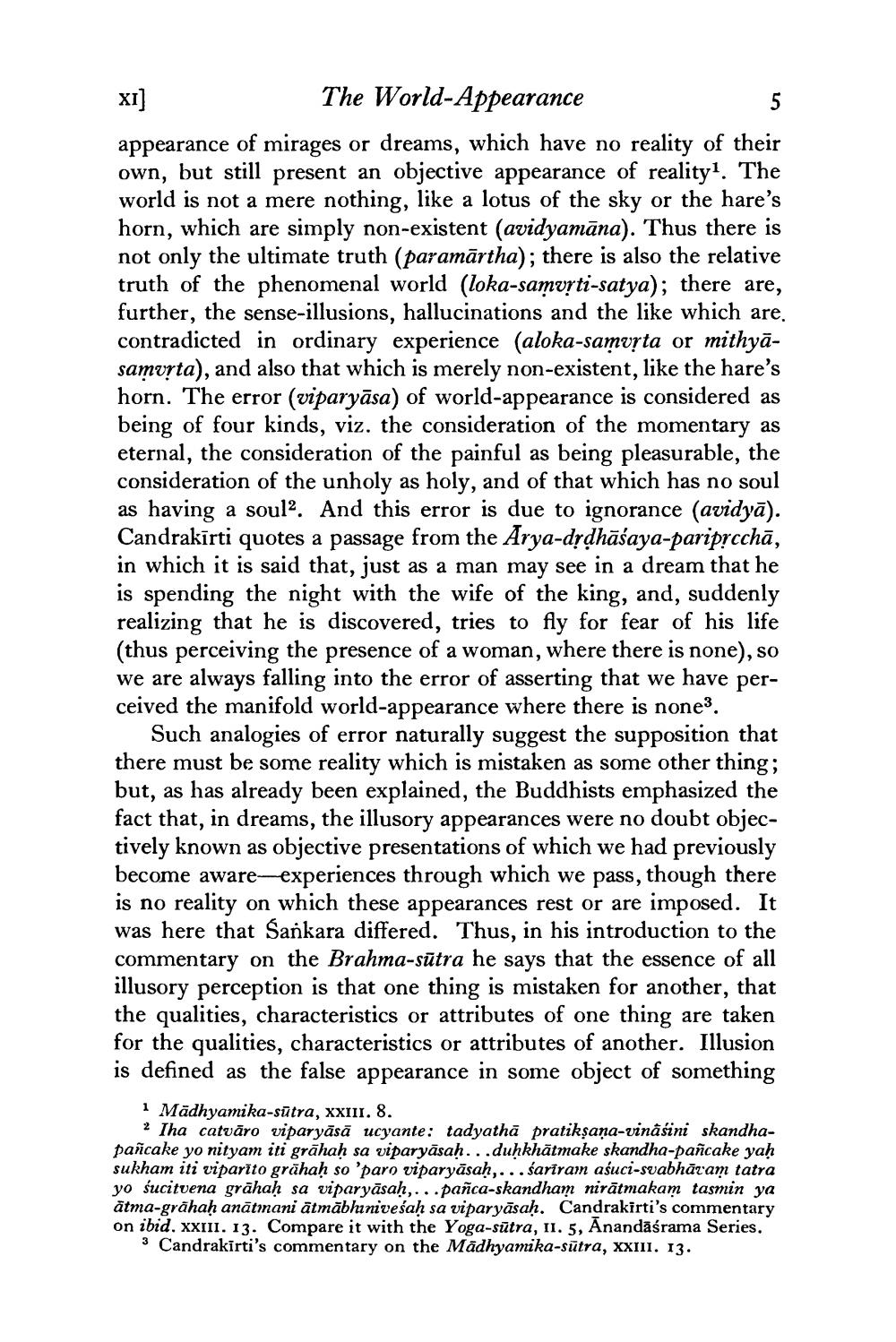________________
XI]
The World-Appearance
5
appearance of mirages or dreams, which have no reality of their own, but still present an objective appearance of reality1. The world is not a mere nothing, like a lotus of the sky or the hare's horn, which are simply non-existent (avidyamāna). Thus there is not only the ultimate truth (paramārtha); there is also the relative truth of the phenomenal world (loka-samvṛti-satya); there are, further, the sense-illusions, hallucinations and the like which are. contradicted in ordinary experience (aloka-samvṛta or mithyasamvṛta), and also that which is merely non-existent, like the hare's horn. The error (viparyāsa) of world-appearance is considered as being of four kinds, viz. the consideration of the momentary as eternal, the consideration of the painful as being pleasurable, the consideration of the unholy as holy, and of that which has no soul as having a soul2. And this error is due to ignorance (avidyā). Candrakirti quotes a passage from the Arya-drḍhasaya-paripṛcchā, in which it is said that, just as a man may see in a dream that he is spending the night with the wife of the king, and, suddenly realizing that he is discovered, tries to fly for fear of his life (thus perceiving the presence of a woman, where there is none), so we are always falling into the error of asserting that we have perceived the manifold world-appearance where there is none3.
Such analogies of error naturally suggest the supposition that there must be some reality which is mistaken as some other thing; but, as has already been explained, the Buddhists emphasized the fact that, in dreams, the illusory appearances were no doubt objectively known as objective presentations of which we had previously become aware-experiences through which we pass, though there is no reality on which these appearances rest or are imposed. It was here that Sankara differed. Thus, in his introduction to the commentary on the Brahma-sutra he says that the essence of all illusory perception is that one thing is mistaken for another, that the qualities, characteristics or attributes of one thing are taken for the qualities, characteristics or attributes of another. Illusion is defined as the false appearance in some object of something
1 Madhyamika-sūtra, xxIII. 8.
2 Tha catvāro viparyāsā ucyante: tadyatha pratikṣaṇa-vināsini skandhapancake yo nityam iti grāhaḥ sa viparyāsaḥ...duḥkhātmake skandha-pañcake yaḥ sukham iti viparito grahaḥ so 'paro viparyāsaḥ,... sariram aśuci-svabhāvam tatra yo sucitvena grāhaḥ sa viparyāsaḥ,...pañca-skandham nirātmakam tasmin ya ätma-grāhaḥ anātmani ātmābhuniveśaḥ sa viparyāsaḥ. Candrakirti's commentary on ibid. XXIII. 13. Compare it with the Yoga-sutra, II. 5, Anandāśrama Series. 3 Candrakirti's commentary on the Madhyamika-sūtra, XXIII. 13.




